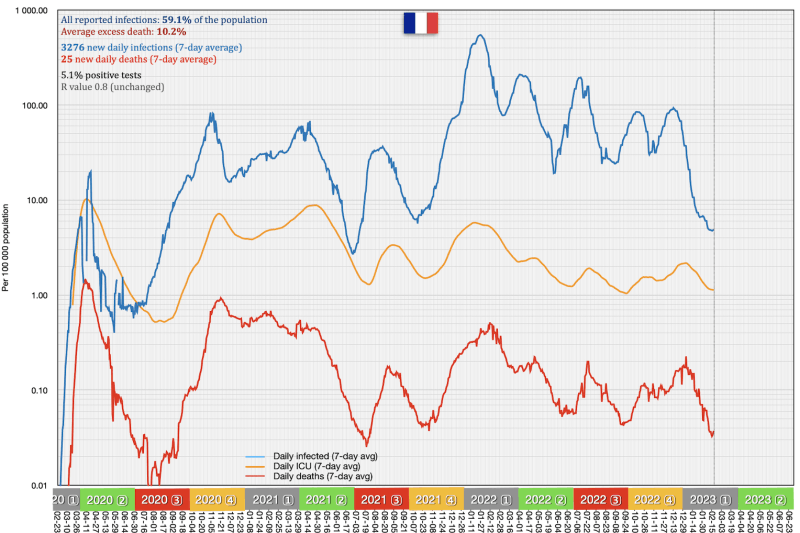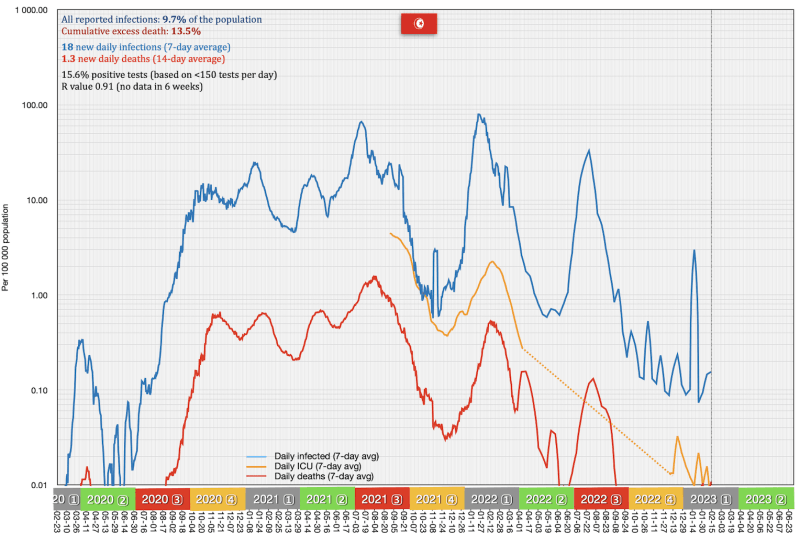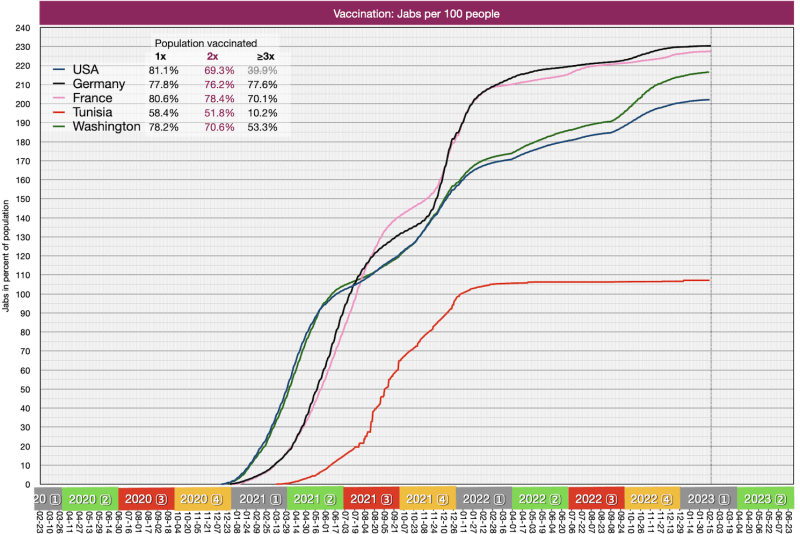 USA – 17 February
USA – 17 February Washington State – 14 February
Washington State – 14 February France – 17 February
France – 17 February Germany – 17 February
Germany – 17 February Tunisia – 13 February
Tunisia – 13 February Vaccinations (Cumulative) – 17 February
Vaccinations (Cumulative) – 17 FebruaryLike The End Of A Song That Fades Out But Keeps Going And Going
Numbers continue to oscillate even though it might seem as if they were to go down
With populations mounting an ever increasing basic immunity to SARS-CoV-2, infection numbers are no longer an indicator of threat. They are undercounted anyway, possibly by about 3-5 times. With the exception of Tunisia, infection numbers remain relatively high though, and they show no willingness to abate like in Tunisia. So Covid-19 is here to stay for now, in the Western world at least.
Likewise, the number of Covid-19 cases in intensive treatment has possibly reached the lowest point in the second quarter of 2022, after which it remained within a steady corridor. In the USA and Washington State, the fluctuation corridor has shifted up a little but remained steady since.
And lastly, mortality has bottomed out at around 0.1 per 100 000 and seems to oscillate around this threshold in Germany, the USA and Washington State. In France, however, mortality has gone down to 0.03 and we need to see if they will fall even further or simply hit the low of March 2021 and then go up again.
Why is mortality in France so much lower now than in Germany? Maybe because more people have died overall in France and Germany is now catching up. In other words, Germany has avoided large numbers of deaths throughout the pandemic and is paying with an extended period of still increased mortality. In the end, both countries might end up with the same number cumulative deaths per capita.
In Tunisia, the number of daily Covid-related deaths has fallen off the chart and is just now peaking into the chart again at 0.001 per 100 000. It remains to be seen if this upward move is the beginning of a trend.
In a study at Cedars-Sinai Health System in Los Angeles, USA, researchers selected almost 24 000 patients who had had reported one of more infections with SARS-CoV-2. They calculated their risk of developing any form of diabetes before and after their first infection (PDF). The researchers found that a person's odds of getting a new diabetes diagnosis were 58 percent higher in the months following a COVID-19 infection compared with the same period prior to infection, even amid the era of omicron.
This corroborates a systemic meta-analysis study published in Scientific Reports last November (PDF), in which researchers compiled data from eight cohort studies involving more than 47 million people and found that COVID-19 infection was linked to a 66 percent increased risk of developing diabetes.
These risk factors are exceptionally high and are thus of concern.
Diabetes comes in two forms: early onset (type 1) and late onset (type 2). Type 1 is an autoimmune disease destroying the insulin-producing cells and leading to a rather quick development of symptoms. It often occurs in younger years but it can hit adults as well. Type 2 entails a gradual weakening of the insulin-producing cells and symptoms can thus take years to develop. It is predominantly seen in adults. Diabetes is a life-long disease with many debilitating side effects.
It seems as if the list of Post-Covid-Symptoms need to be amended by diabetes.
And maybe I should continue masking in trains…